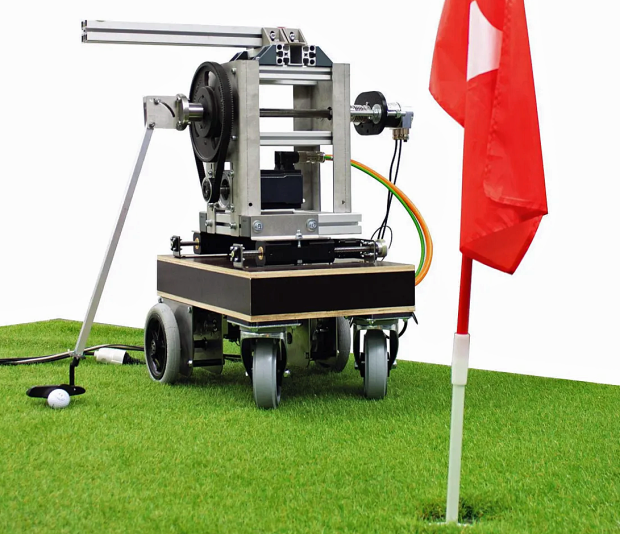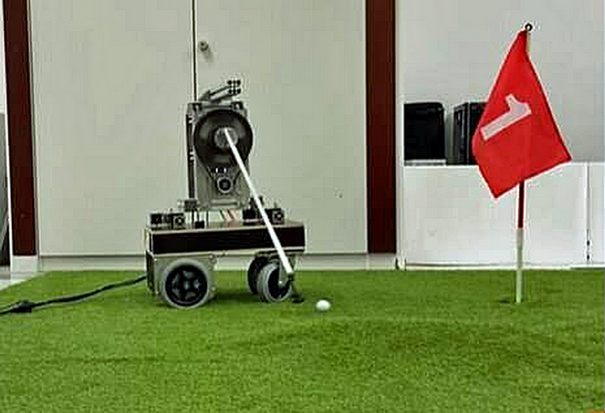Golfing Robot Uses Physics-Based Model to Train its AI System


Golf is a notoriously difficult sport—professionals and amateurs alike spend countless hours attempting to improve their game. One of the most difficult parts of the game is putting the ball into the hole. Much of the difficulty lies in the combination of factors at play—the height of the grass and its roughness, the amount of wind and degree of humidity, and worst of all, the terrain. Researchers at Paderborn University in Germany have built a robot that can knock a ball into a hole using a club on a putting green on most attempts. Annika Junker, Niklas Fittkau, Julia Timmermann and Ansgar Trächtler have published a paper on the arXiv preprint server describing their robot and its performance.
Before it can make it’s shot, the robot has to line its putter up with the ball, which requires it to work out where on the green both itself and the ball are. To do so, it uses a neural network that has been trained to spot golf balls and a hard-coded object detection algorithm that picks out colored dots on the top of the robot to work out its orientation. This positioning data is then combined with a physical model of the robot and fed into an optimization algorithm that works out how to control its wheel motors to navigate to the ball.
Junker admits that the approach isn’t flawless. The current set-up relies on a bird’s eye view, which would be hard to replicate on a real golf course, and switching to cameras on the robot would present major challenges, she says. The researchers also didn’t report how often Golfi successfully sinks the putt in their paper, because the figures were thrown off by the fact that it occasionally drove over the ball, knocking it out of position. When that didn’t happen though, Junker says it was successful six or seven times out of ten, and since they submitted the paper a colleague has reworked the navigation system to avoid the ball. For details, see IEEE’s report here.
